A History of Robotic Force Torque Sensors

Posted on Jan 28, 2016 in Robot Sensors
7 min read time
Force torque sensors are now ubiquitous in robotics, but where did they come from? What series of inventions and discoveries caused robot force sensors to arrive where they are today? We look at the history of force torque sensors to find out the story of this key technology.
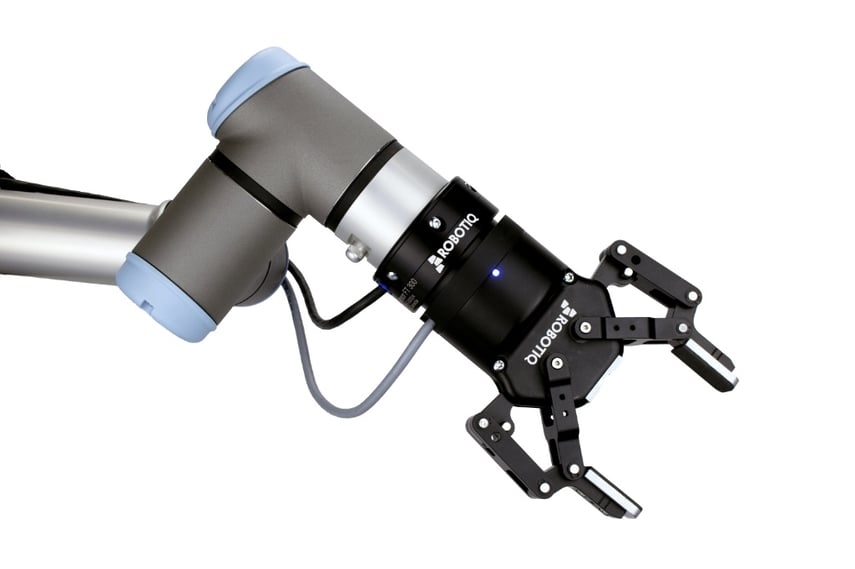
Right now, we're all excited here at Robotiq about the latest addition to our force sensor family. Force torque sensors are such a normal sight in modern robotics that you may never have wondered "Who invented the force torque sensor?”. It turns out that this sensor came about thanks to a whole stream of great minds - scientists, inventors and researchers.
Let’s take a look at the history of the force torque sensor.
Early History - Scientists Under Pressure
The first step toward robot force sensors was taken by the classical scientists of antiquity. However, they weren't interested in force, but rather pressure. We now know that pressure is defined by "force over area" but, in the beginning, the only "area" that people were interested in was a field of dry crops that needed to be watered.
1594 - Galileo is Confounded
It all started because Galileo Galilei had designed and patented a machine for irrigating crops. It used a syringe-based suction pump to pull water out of a river. Unfortunately, there was a problem with the machine - the pump would never pull the water above 10m. Galileo couldn't come up with any explanation why. The problem puzzled him and other scientists for years.
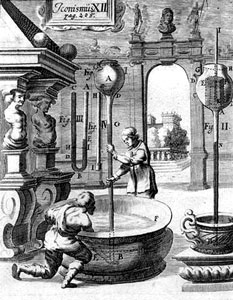 1644 - 1661 - Filling the Vacuum
1644 - 1661 - Filling the Vacuum
Finally, the puzzling question of pressure was solved during a succession of discoveries in the 17th century. In 1644, Evangelista Torricelli explained Galileo's problem as being caused by the weight of the water and declared the existence of "the empty vacuum”, which annoyed the supporters of "the omni-present god”. Two years later, Blaise Pascal walked up a mountain to prove that pressure is the force of the air. In 1656, Offo von Guerke developed a new vacuum pump and then tested the vacuum by trying (and failing) to pull it apart with eight horses. Then finally, in 1661, Robert Boyle derived the relationship between pressure and volume of air which would set the stage for the first force sensor.
All in all, it was a busy 17 years. It gave us the fundamental understanding of the relationship between pressure and force. However, after such a busy period, activity died down for the development of force sensing. Nothing happened for almost 200 years.
Late Antiquity - A Sense of Change
1843 - 1849 - The First Force Sensor
In 1843, the first force sensor was developed - the aneroid barometer. This was followed by the Bourdon tube in 1849. These sensors used the principles discovered 200 years earlier to measure the atmospheric pressure. A fixed volume of air contracts or expands as the atmospheric pressure changes, moving the needle on the dial. Using the same principle, MEMS barometers have recently been developed into cheap robot force sensors, in the form of the TakkTile sensor from Harvard Biorobotics Laboratory.
1843 - 1856 - The Wheatstone Bridge - Born 100 Years Too Early
At the exactly the same time, a key theory arrived which would become a vital part of modern force sensors. Sir Charles Wheatstone designed an electric circuit which could precisely measure the resistance of an unknown resistor (which would eventually be replaced by a strain gauge). In 1856, Lord Kelvin presented a report on the relationship between mechanical strain and electrical resistance.
Unfortunately, these developments would have to wait for over a century to actually be applied to force sensors. Nothing much happened for 80 years. The theories of Sir Wheatstone and Lord Kelvin sat around in textbooks, waiting for modern electronics to catch up with them.
The Middle Ages - Starting to Feel the Strain
1936 - The Birth of the Strain Gauge
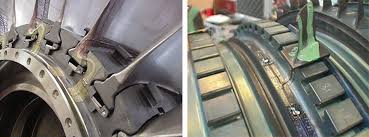
Suddenly, the strain gauge was born into existence by an aerospace engineer called Charles M. Kearns. He had just got a job at the Hamilton Standard Propeller Company and was assigned to solve the problem of inflight propeller failures. The existing methods to detect mechanical strain used carbon-based paints which were painted onto the propeller blades. As a keen amateur radio enthusiast, Kearns had the idea to grind down a carbon resistor, stick it to the blade and measure its changing resistance to calculate how much the propeller had bent. Within four years, in-flight propeller failures were eliminated as a problem and the strain gauge was born.
1938 - The Strain Gauge Grows Up
By the end of the 1930s, the race was on to improve the strain gauge force sensor. Bonded wire strain gauges were developed by two different researchers simultaneously - E.E. Simmons at Caltech and Arthur Ruge at MIT. Simmons was quicker to apply for a patent. Wire strain gauges became the new standard.
1952 - 1953 - Foiled Again
However, the development of the force sensor had only just begun. In early 1952, an engineer called Peter Jackson became very frustrated by the fact that various flaws made the wire strain gauges useless for his helicopter application. He decided that they were a waste of time and invented the foil strain gauge in 1953.
1967 - 1969 - Silicon Strain Gauges
With the rise of semiconductor fabrication, it was inevitable that strain gauges would eventually be made out of silicon. By 1967, Zias and Egan of the Honeywell Research Center had patented the technology. In 1969 Hans W. Keller patented the first batch-fabrication process. So, by the 1970s, silicon strain gauges were all ready for robotics to enter the scene.
The Early Modern Period - Robots Arrive!
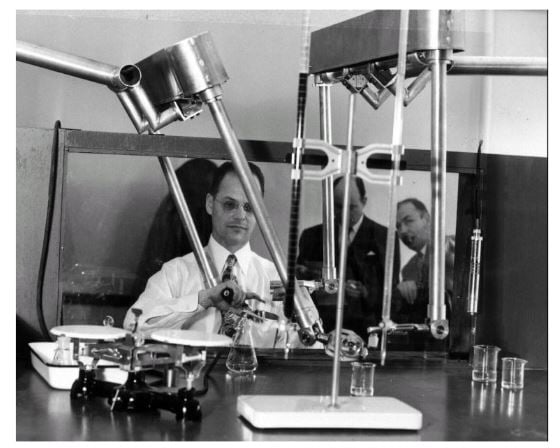 1949 - 1951 - Teleoperation Kicks It All Off
1949 - 1951 - Teleoperation Kicks It All Off
Before the first industrial robots had even been dreamt up by George Devol, Raymond Goertz at the Argonne National Laboratory was integrating force feedback into robotic teleoperations, which he used to handle radioactive materials. His first teleoperations were purely mechanical linkages, which gave them inherent force feedback. In 1951, he patented an electrical manipulator. This was a major milestone for teleoperation and haptic research, which has been at the forefront of force control research ever since.
1961 - Industrial Robots Arrive
The first industrial robot, Unimate, came on the scene in 1961. It did not have force control. Neither did most industrial robots, up until quite recently. They used motion control techniques (e.g. position or velocity controllers) which meant that they had to follow very strictly defined paths and could not monitor the force applied by the robot on the task.
However, although force control wouldn't reach factory robots for some time, researchers started to integrate force sensors into their robots.
Modern Day - The Force Awakens
1970s or thereabouts - The 6-Axis Force Torque Sensor Arrives
At some point in the 1970s, the 6-axis force torque sensor was invented. Unlike the previous developments, is not so clear who first invented it. Patents were filed around 1980 for multi-axis load cells and there are various research papers from around the same time. Strain gauge based mechanical load cells had been around for a while, so it seems likely that the first 6-axis force torque sensor was the result of steady research conducted by several research groups, just like most modern robotic developments.
1970s - 21st Century - Research Abounds
As early as 1973, force control was being integrated into robotic manipulators. At some point, somebody first stuck a 6-axis force torque sensor onto a robot. It's not clear who this person was, but the important thing is that they did it.
From the late 1970s right up to the present day and beyond, force control research has just increased in strength.
2016 and beyond What's Next in the World of Force Sensors
These days there are so many new force sensing technologies that it’s hard to keep up. The 6-axis force torque sensor has only started to take off in industry relatively recently, but the world of researchers comes up with new sensing technologies every day.
After such a long history, the force sensor has become an integral part of robotics.
Which point in history do you think was the most important for robot force sensing? Are there any historical points you think could be added to this post? Which new force sensors do you find most interesting? Tell us in the comments below or join the discussion on LinkedIn, Twitter or Facebook.

 1949 - 1951 - Teleoperation Kicks It All Off
1949 - 1951 - Teleoperation Kicks It All Off
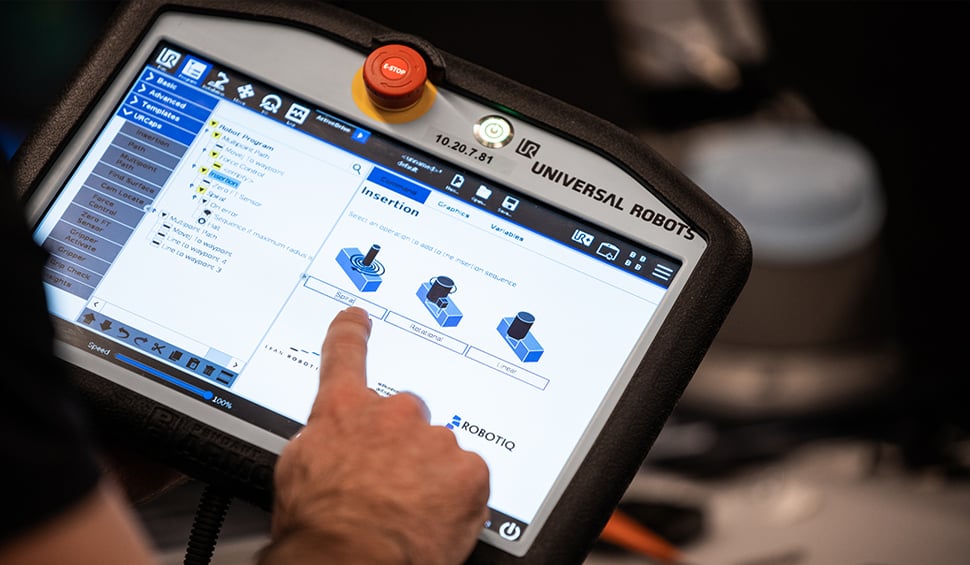
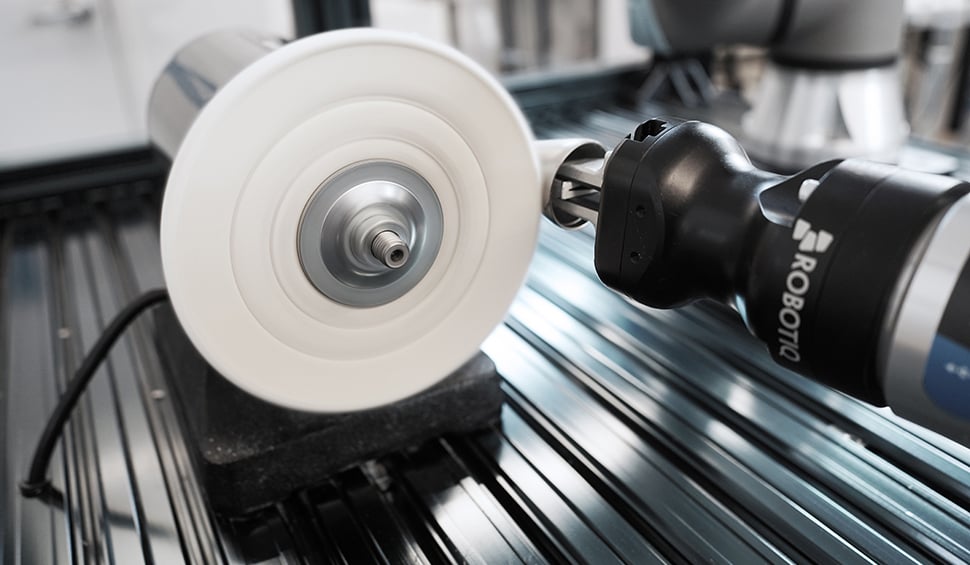
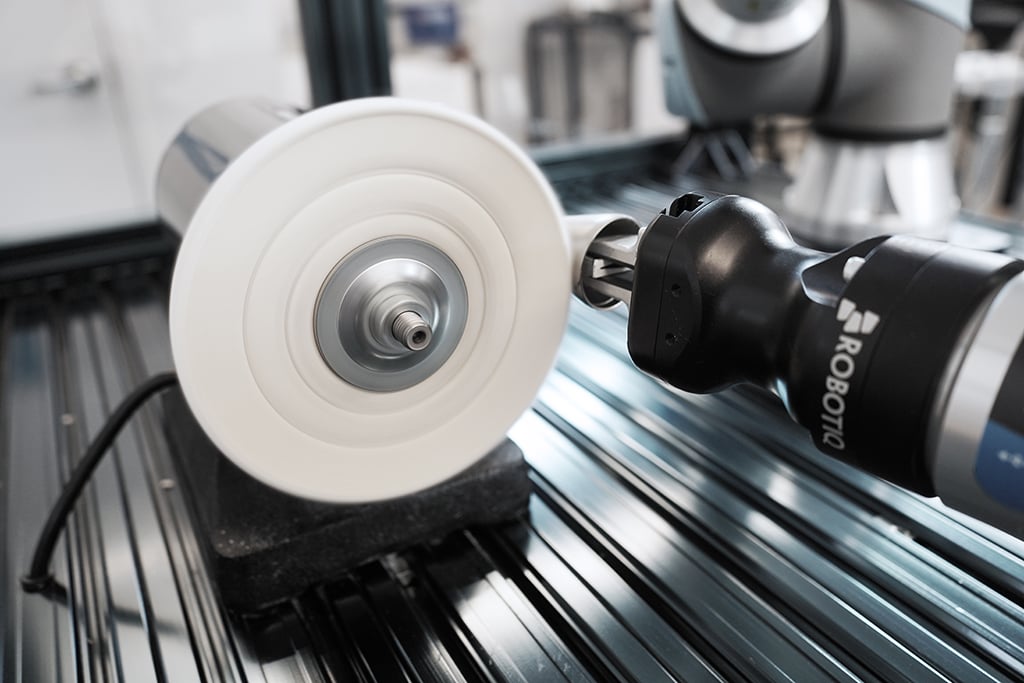
Leave a comment